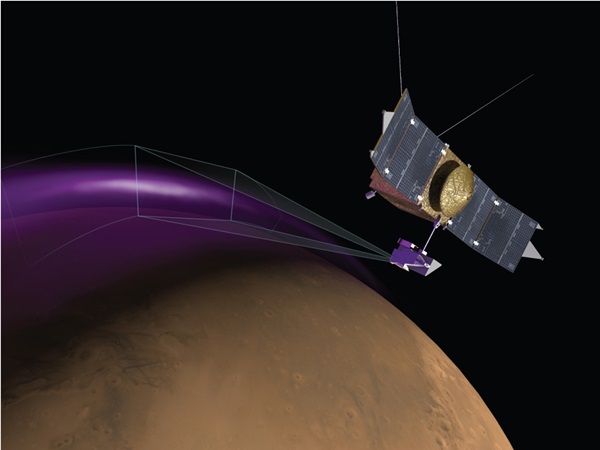Key Takeaways:
The presence of the dust at orbital altitudes from about 93 miles (150 kilometers) to 190 miles (300km) above the surface was not predicted. Although the source and composition of the dust are unknown, there is no hazard to MAVEN and other spacecraft orbiting Mars.
“If the dust originates from the atmosphere, this suggests we are missing some fundamental process in the martian atmosphere,” said Laila Andersson of the University of Colorado’s Laboratory for Atmospherics and Space Physics in Boulder, Colorado.
The cloud was detected by the spacecraft’s Langmuir Probe and Waves instrument and has been present the whole time MAVEN has been in operation. It is unknown if the cloud is a temporary phenomenon or something long lasting. The cloud density is greatest at lower altitudes. However, even in the densest areas it is still very thin. So far, no indication of its presence has been seen in observations from any of the other MAVEN instruments.
Possible sources for the observed dust include dust wafted up from the atmosphere; dust coming from Phobos and Deimos, the two moons of Mars; dust moving in the solar wind away from the Sun; or debris orbiting the Sun from comets. However, no known process on Mars can explain the appearance of dust in the observed locations from any of these sources.
MAVEN’s Imaging Ultraviolet Spectrograph observed what scientists have named “Christmas lights.” For five days just before Dec. 25, MAVEN saw a bright ultraviolet auroral glow spanning Mars’ northern hemisphere. Aurorae, known on Earth as northern or southern lights, are caused by energetic particles like electrons crashing down into the atmosphere and causing the gas to glow.
“What’s especially surprising about the aurora we saw is how deep in the atmosphere it occurs — much deeper than on Earth or elsewhere on Mars,” said Arnaud Stiepen from the University of Colorado. “The electrons producing it must be really energetic.”
The source of the energetic particles appears to be the Sun. MAVEN’s Solar Energetic Particle instrument detected a huge surge in energetic electrons at the onset of the aurora. Billions of years ago, Mars lost a global protective magnetic field like Earth has, so solar particles can directly strike the atmosphere. The electrons producing the aurora have about 100 times more energy than you get from a spark of house current, so they can penetrate deeply in the atmosphere.
“The MAVEN science instruments all are performing nominally, and the data coming out of the mission are excellent,” said MAVEN Principal Investigator Bruce Jakosky.










